The Creamy Difference Between Chocolate Mousse And Pots De Creme
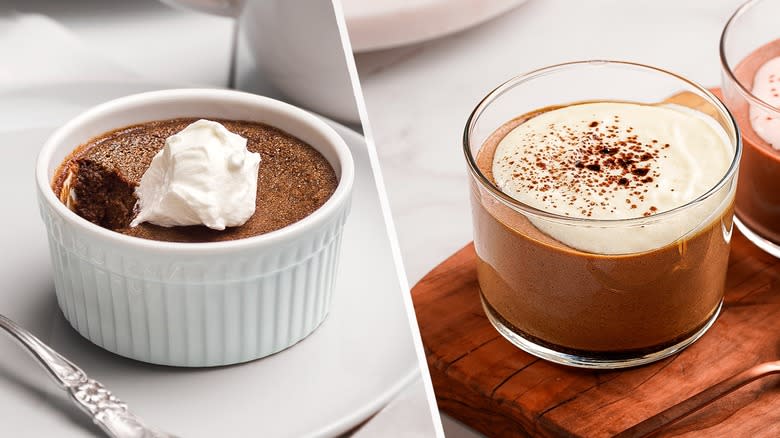
There are some desserts that are so similar that even foodies with a strong sweet tooth might get them confused, like the subtle differences between fudge and ganache. It's the same case for chocolate mousse and pots de creme because a glance at a bowl of either dessert will look very similar — until you take a bite and notice a difference in the texture. And, of course, their recipes use different techniques to achieve that textural difference.
You've probably had chocolate mousse, a French airy and velvety custard that takes several hours to whip up but never goes into the oven. Pots de creme is also part of French cuisine, but a bite will offer a thicker texture, and it requires time in the oven, similar to cooked pudding, which can also be tricky to nail down if you don't follow our essential tips for making homemade pudding. Both desserts also use similar ingredients, but there are other differences in the cooking methods that you should know before planning to make either.
Read more: 25 Chocolate Brands, Ranked Worst To Best
What Is Chocolate Mousse?
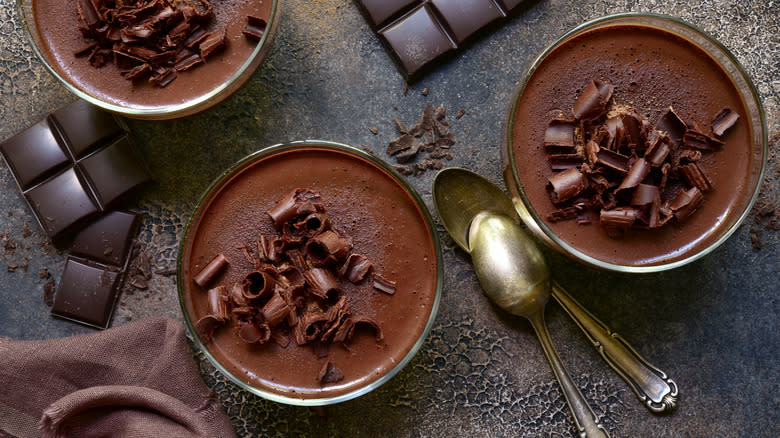
Chocolate mousse, and mousse in general, originated in France during the 18th century but has made its way into many other cuisines, including here in the United States. The dessert is typically served chilled in small bowls or ramekins and might be garnished with chocolate shavings, fresh fruit, or mint leaves along with whipped cream. Expect a rich bite with an airy, almost foamy texture, which makes sense because "mousse" is French for "foam."
A traditional recipe for chocolate mousse will call for ingredients like heavy cream, eggs, sugar, vanilla, bittersweet chocolate, and whipped cream. Patience is required to pull off a perfect batch of chocolate mousse because you must whisk the ingredients into a custard, melt chocolate, combine it with the custard and egg whites or whipped cream, then let it chill for at least six hours. Often, the yolks go into the custard while the whites are folded in later. For the whipped cream, you can buy it pre-made or make it yourself, but don't overwhip it or the heavy cream will separate and the chocolate mousse will have a grainy texture. Of course, there are variations, like Tasting Table's toasted white chocolate mousse recipe or other renditions that use alternative ingredients like dark chocolate instead of semi-sweet, recipes that incorporate mousse into a cake, and others that use avocado for a healthier take.
What Are Pots De Creme?
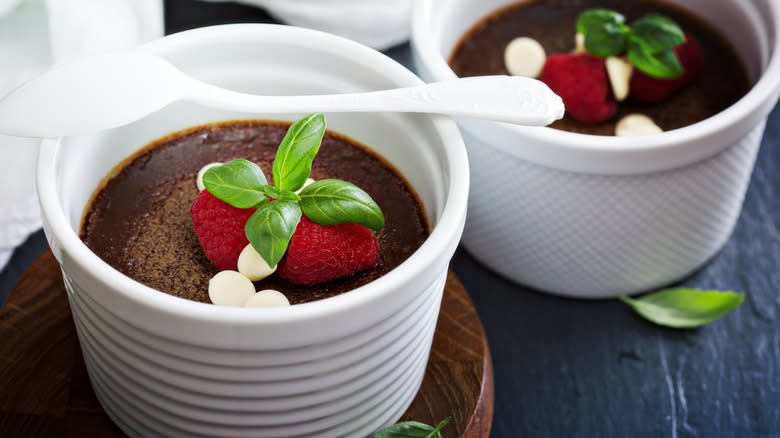
Pots de creme is also a French culinary creation, with the custard's origin dating back to the 17th century when it was served in elaborate cups made of porcelain. The dessert's name even translates from French to "pots of cream" in English. These days, you'll likely eat pots de creme out of a small bowl or ramekin, just like chocolate mousse. In comparison to mousse, this custard will be a bit creamier, denser, and thicker in texture. Depending on the ingredients used, the taste may or may not be similar between the two dishes.
To make pots de creme at home, many recipes require ingredients like dark or bittersweet chocolate, milk, heavy cream, egg yolks, white sugar, salt, and whipped cream. The ingredients turn into pots de creme when you bring the dairy to a boil, add in the other ingredients like egg yolks and sugar, then whisk or blend everything together with the chocolate. Next, it's baked, typically in a water bath. However, some recipes blend the ingredients and chill — skipping the heating step just like mousse. Sounds delightful, right? Try it with the many recipes available online or, for a twist on the dessert, consider Tasting Table's chocolate blood orange pots de creme recipe.
Chocolate Mousse Doesn't Go Into The Oven
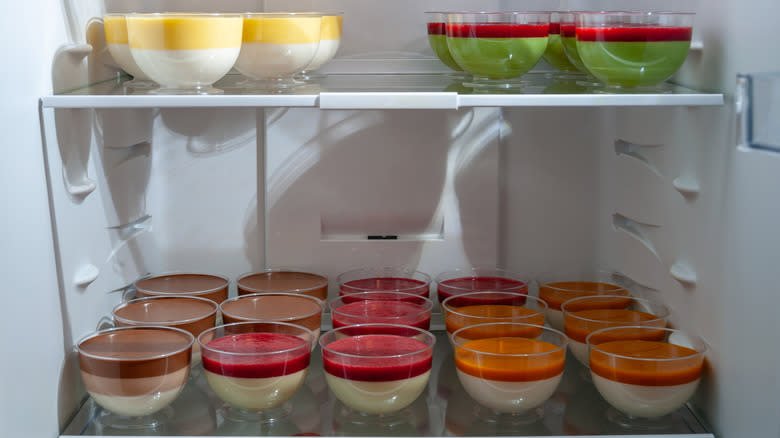
One of the biggest differences between chocolate mousse and pots de creme is that the latter typically requires some time in the oven. Chocolate mousse never goes into the oven. Mousse sets when it's carefully whisked together into a custard and then goes into the fridge for up to several hours — leading to its lighter texture and those small air bubbles that you might expect from a spoonful.
Conversely, the majority of authentic pots de creme recipes involve doing all of the prep work, placing the filled ramekins in a large water bath, and then baking until they set. Some recipes only require the pots de creme to bake for about 30 minutes, while others require up to an hour in the oven. It's worth noting that some recipes cook the custard on the stovetop, blend the ingredients, and then place it in the fridge to chill.
Pots De Creme Usually Only Uses Egg Yolks
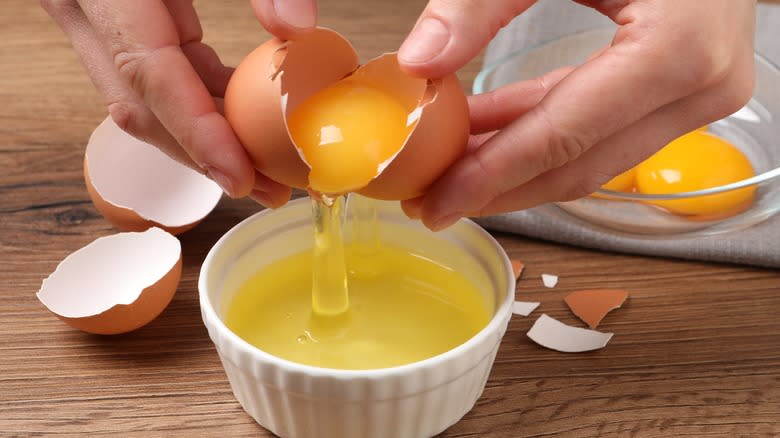
Another small difference between these two French desserts is the way that most recipes incorporate eggs into the dish. When you look at the majority of authentic recipes for pots de creme, the ingredient list will only name egg yolks. Some recipes may call for as many as 5-6 egg yolks depending on the serving size. The use of egg yolks gives pots de creme a richer, denser texture compared to mousse.
Chocolate mousse also uses egg yolks for the custard but then folds the egg whites into the mixture to achieve its light, airy texture. Some recipes might use heavy cream or whipped cream instead of egg whites and, therefore, only use yolks, like pots de creme. Then, there are recipes that only use egg whites for an even lighter dessert and simpler recipes that don't use eggs at all. That's why we think it's a good idea to read the recipe fully before cracking an egg or two to make mousse or pots de creme.
If you're fond of desserts, you might want to check out the differences between cobblers and crumbles, which have American and British roots rather than French origins.
Read the original article on Tasting Table.

